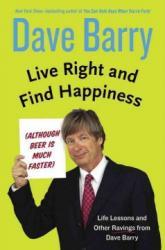
I grew up on the humor writings of Dave Barry. Each week I’d take his humor
column to school and read it to my friends during my lunch break, laughing at
his comedic style and funny topics. Consequently, I found myself enthralled
by his books, each one leaving me in stitches due to his observational humor
of the weird world around us (or at least around Miami, Florida). I was
saddened when he decided to retire from writing these weekly humor columns.
As such, each time he releases a new book full of his writings (mainly essays
now), I usually pick it up out of habit.
While I can usually blow through one of Dave Barry’s books in a couple
hours, I’m finding that I’m not nearly as amused as I used to be. It
could be that I’ve grown up a bit and no longer find boogers as funny as I
once did, but I think the issue lies at a deeper level of Dave’s writing.
Where his previous books written during his heyday were all essentially
centered around a common theme (Cyberspace, Japan, Aging, Home Repair, etc.)
recently his books have been whatever he’s done most recently. The problem
this creates is that each of the individual essays of the book is disjointed
from all the other ones.
Essentially, even though it would mean a much longer hiatus from Mr.
Barry’s humorous writing, I would enjoy his “themed” essay collections
more than the ones he’s put forward in most recent three books. In fact, he
could probably categorize them into three different books about international
travel, teenage daughters, and current homeland topics. As it is right now,
I’ll probably still buy Dave Barry’s books, but I’m not laughing as
much as I used to.
Another adequate collection of humorous essays by Dave Barry, I give Live
Right and Find Happiness 3.0 stars out of 5.

I was honestly surprised by this book. As has been the case with most
comedians and the books they have written, I expected this to be a bit of an
autobiography in the veins of Bossypants , Yes Please , The Bassoon King: My
Life in Art, Faith, and Idiocy , and Is Everyone Hanging Out Without Me?
Instead, I was presented with a book filled with data, analysis, and
information about how modern relationships work when compared with the
relationships of past generations. Having gone through some of this “Modern
Romance” myself, I could certainly relate to the information being
presented, nodding my head in agreement as things I noticed suddenly had
explanations pinned to them.
But it wasn’t that the book was not an autobiography that surprised me, it
was the humorous way that Aziz Ansari managed to present this subject matter,
while also maintaining high scientific rigor. If I were to put this in a
category of non-fiction humor, it would probably be in the vein of I Am
America but without the tongue-in-cheek satire. Maybe I’m even wrong in
this characterization and it should fall under the collections of humor
around a single topic, like the works of Dave Barry. Either way, this book
was informative and not judgmental in the slightest. It was merely presenting
the facts that had been discovered, but in such a way that made me laugh
about the whole situation.
For those people who are in relationships, want to be in relationships, or
who just want to play the singles game, this book is an optimistic look at
what has changed, what is likely becoming the “norm”, and what we should
all expect from relationships in the future. Simply put, the smartphone has
complicated the world of romance, but it has also given a lot of benefit to
those who know how to use it as a tool to get what they want out of life. I
would almost encourage Ansari to continue writing books like this, because
his humor has made a somewhat dry subject a lot more palatable.
A great book that explores why the dating scene is so different now, I give
Modern Romance 4.0 stars out of 5.
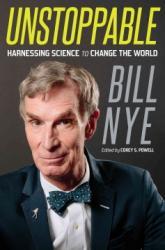
I grew up on Bill Nye’s science show on PBS. I appreciated his
straightforward approach to teaching science to children that was both
informative and humorous. Possibly in part due to this, I now find myself
with a Master’s degree in Mechanical Engineering and employed in a very
technical field. I also find myself writing books which are surreptitiously
educational, hoping that the entertainment value of my writing will subtly
inspire people to learn more about science. Consequently, merely based on the
author of this book, I was interested in reading it, despite the somewhat
vague and ambiguous title.
While there was plenty of very interesting material presented in this book,
much of it I had already known about by keeping up with the technological
advances of the world today, I felt like its order was a little off. Right
from the get-go, Nye hammers home that global climate change is a problem.
The entire rest of the book then explores technologies and developments that
could potentially solve, or at least abet the rapid rate of change leading to
our soon-to-be unsustainable world. As a result, there’s a bit of fear
introduced from the beginning that is tugged on throughout. I would have
flipped these topics around and shown all the neat scientific breakthroughs
(or near breakthroughs) we have in our current world, then use the knowledge
of these advancements to address the climate change issue. In this way, I
think the tone would be more inspiring and lead more people to pursue the
solutions instead of being alarmist and driving people to act out of fear
instead of out of the hope of what our future could be if we act now.
Nye’s trademark humor is sprinkled throughout his writing, which made
reading this book enjoyable. Furthermore, since he takes a very personal
approach with his examples and stories (I love his “love/hate”
relationship with Ed Begley Jr.), many of his opinions leak through. Many
times throughout the book, these opinions came off to me as a bit
off-putting, especially if the person reading this book happens to be of an
opinion differing from Nye’s. As such, there was a bit of “preaching to
the choir” that might not be helpful when trying to change the minds of
those who don’t share the same opinions. Still, his attempts at re-framing
the problem of global climate change and adjusting how we think about it were
quite admirable and I think everyone should give his ideas a chance.
A tale of both imminent danger and inspiration, I give Unstoppable 3.5 stars
out of 5.
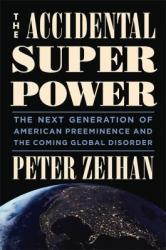
I can’t remember when or why I added this book to my “to-read” list on
Overdrive, but I’m certainly glad I did. While it’s a little dated from a
2017 perspective, The Accidental Superpower is an incredibly insightful book
that helps to peel back the onion of global politics and economics to reveal
the underlying factors that are, and have been, shaping the world into what
it is today. As a bonus, after reading this book, I have a better
understanding of how countries and societies develop from a geographical and
economic standpoint and can use these insights to aid in the world-building
for a few of my upcoming novel series.
Right from the get-go, The Accidental Superpower opened my eyes to the
obvious: geography determines economy. Mountains separate areas almost as
well as oceans do, but the best economies are the ones that can move their
goods about in the fastest and most efficient ways. As luck would have it
when first colonizing the United States, the founding fathers had no idea
just how immensely fortunate they would be with the geography to their west.
Peter Zeihan expertly shows how other countries have geographic problems that
are keeping them from being nearly as united as the United States.
However, disaster is soon upon us. The demographic changes throughout the
world will soon impose strains on all economic systems. While the world will
continue to be in crisis due to its geographies influencing the economies of
its various nation states, the United States is the only one holding it all
together, mostly due to our generosity of offering “free trade” after the
end of World War II. If we pull that rug out from underneath the world, we in
the U.S. will likely survive, but at the cost of the global economy
collapsing.
A must-read for anyone who exists in this global economy, I give The
Accidental Superpower 4.5 stars out of 5.
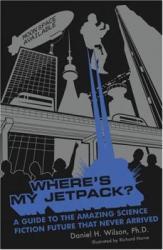
Some of the best science fiction ever written was strangely prescient with its predictions on how the world would advance, technologically. One of the best examples of this was Jules Verne in his story From the Earth to the Moon. Not only did he figure out what it would take to get away from Earth’s gravity, he predicted that the launch site would be in Florida. Ever since then, we have looked to the authors of science fiction to tell us what could be possible in the future of tomorrow.
Unfortunately, some of these predictions weren’t quite realistic. While jetpacks and moon colonies sound cool in the pages of a fictional book, they just aren’t practical in reality. Still, our childlike wonder and innovation tried its best to create what the science fiction authors of yore dreamt up. In Where’s My Jetpack?, Daniel H. Wilson does his best to explain where all these fantastical inventions and concepts are in their process toward being fully realized. But don’t worry about this being a stuffy tome full of complicated science. Wilson does a good job infusing humor with his research, which helps to show how ridiculous some of these ideas really are.
My one challenge with this book came with the fact that it was published back in 2007. It’s been 10 years since this book came out and now much of its research is either naively optimistic or didn’t pan out. What’s perhaps even more exciting is being aware of the technological developments that have made some of the impossibilities mentioned in this book at least somewhat plausible. Consequently, it’s best to read this book as a snapshot in the technological timeline that is our current reality.
A humorous look at the amazing technological developments inspired by sci-fi, I give Where’s My Jetpack? 4.0 stars out of 5.
For more reviews of books and movies like this, please visit www.benjamin-m-weilert.com
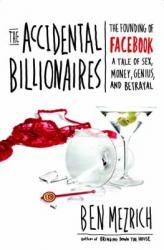
Upon a recent re-watch of The Social Network (2010), I came to the realization that the story was based on the book, The Accidental Billionaires by Ben Mezrich. In standard fashion, I put this book in my “to read” list and waited until the audiobook was available. Even though both the book and the movie were created shortly after the meteoric rise of Facebook into the mainstream, the story is still intriguing and captivating. In fact, I think the strength of both works is due to the irony of the whole situation: an anti-social computer genius creates the largest social network ever.
While the book doesn’t use Mark Zuckerberg’s legal troubles as a framework to break up the story as the movie does, both hold very closely to the same narrative. The one thing the book manages to emphasize more than the film is the “romantic” aspect of the whole endeavor. Essentially told from Eduardo Saverin’s perspective, the impetus to attain coveted social connections so as to increase the chances of meeting girls is made clear right from the get-go. The fact that college is the best place to do this is probably why the events of Facebook’s creation (as well as the Winklevoss’ failed website) took place there.
Partly because this story is so incredibly entertaining (in a soap opera drama kind of way), I do have my doubts about the accuracies of its plot. Because depositions and other legal documents comprised the majority of the research, some of the inner thoughts of the characters remain the speculation of the author (except Saverin, who provided consultation for the book). Nevertheless, Zuckerberg’s genius is evident in this book, especially since the portrayal of his character is a mostly apathetic computer programmer who wasn’t out to create “the next big thing” but instead saw a gap and ably filled it.
An enthralling story of one of the most culture-changing inventions of our lifetime, I give The Accidental Billionaires 4.5 stars out of 5.
For more reviews of books and movies like this, please visit www.benjamin-m-weilert.com
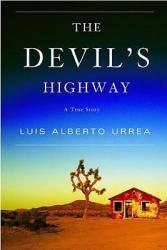
In "The Devil's Highway" Urrea shares the stories of people making great sacrifices to provide for their families. Urrea interviewed the family, friends, coyotes, doctors, and Border Patrol agents linked to the 26 men crossing the border from Mexico to Arizona. Only 12 men survived the journey through the unforgiving desert. Urrea gives insights into the daily lives and aspirations of people wanting a better chance to make a living. He also explains the procedures Border Patrol follows to find people in desperate situations.

Kathy Griffin is remarkably well spoken. I enjoyed reading this book because it seemed like she was just talking to me. She dishes on celebrities, which is fun. It will come as no surprise that she's funny, but she's also very smart and loyal to her friends and family. Good memoir!
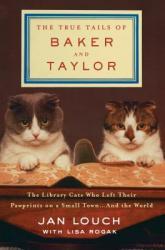
Do you love libraries? Who doesn't? So everyone should love this book. Baker and Taylor are two Scottish Fold cats adopted by a small library in Nevada. This library has a mouse problem so Jan Louch, Assistant Librarian, researches good cat breeds for libraries. First Baker is adopted and the fun is doubled when Baker's nephew, Taylor, is added to the staff. Patrons, staff and even a fan club comprised of a 4th grade class add to these heartwarming tales. Adorable pictures complete the delightful mix.
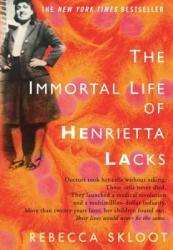
This book tells three intertwining stories and spans decades, centering on an immortal line of human cells, taken from an African American woman named Henrietta Lacks in the 1950’s. She was afflicted with an aggressive form of cervical cancer, and through deception, gave her consent for the doctor to take cell samples. Her cell sample was coded as HeLa, and her real identity was not known. This event starts a fascinating, disturbing tale of medical ethics gone awry, capitalism in medicine, investigative journalism, and the contrasting lives of Lacks descendants.
The discovery of Henrietta’s immortal cancer cells, laid the foundation for most of the scientific discoveries we have made, and created a multi-billion dollar industry where her cells were sold all over the world as an infinite supply of scientific testing material. At the same time companies and hospitals were selling the HeLa cells, the Lacks family were living in extreme poverty, with no medical care. Author Rebecca Skloot bounces back and forth between Henrietta’s final days, and the present day, as she attempts to gain the trust of the Lacks family, discover who HeLa was, and how medical ethics were not always a reality. For a non-fiction book about cellular biology, it is a riveting detective story that also exposes medicines sordid past, and makes the reader question whether advancement of medicine is worth it at any cost.
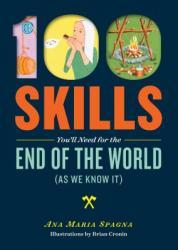
This little book is full of more information than you can imagine. Each section is just enough to get you started, to pique your interest. (But if there is an entry that speaks to you, remember to check the library for a more in-depth book!)
From Bartering to Foraging and even Porch Sitting, each passage is illustrated delightfully. I chuckled every other page. Written playfully, yet with much seriousness - it is easy to quickly get sucked in and keep reading until you think your brain might burst from all that delicious information!
As soon as I got to the Hoarding passage, I sincerely wished Ana were my friend, or at the very least, nearby if and when the world (as we know it) ends.
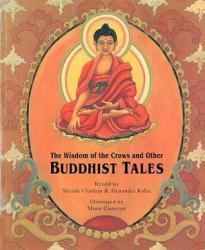
A great book for reading on break or at lunch. The tales are interesting and amusing. Some were more obviously lessons while others just seemed to be stories. Thumbs up!
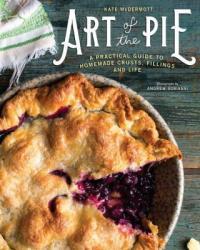
I don't like pie, but every so often I take a few bites just to see what the fuss is all about. Now that I eat gluten-free, I'm rarely pie curious. When I saw the title of the latest ebook Big Library Read, Art of the Pie by Kate McDermott I wasn't the least bit tempted until I read the subtitle, A practical guide to homemade crusts, fillings and Life. Intrigued by the pie/life connection, I clicked the download button.
Even in electronic form this book is beautiful. The photography is stunning, and let's face it, pies can be pretty. The book is in story format, not page after page of (boring) recipes. It is clear that Kate McDermott has mastered the pie art, and she explains every detail with engaging narrative. I didn't actually commit to the book until McDermott admitted that she was now gluten-free too. Her pie making changed from gluten-full (her term) to gluten-free. That gave me hope gluten-free baking might eventually transcend bitter bean flour, tasteless rice cookies and hard slab pizza crust.
I enjoyed McDermott's stories about her journey as a pie maker, especially her tales of woe about awful school lunches, her red-plaid metal lunch box, and scary lunch ladies. I chose to read Art of the Pie on a whim, and I'm glad I did. It's a gentle read that almost inspired me to learn the art of gluten-free pie making.
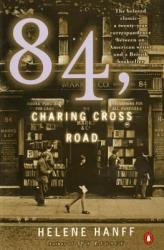
I really loved this book - a book of letters about books! With a little history thrown in about England after World War II. I like books that are composed of letters whether they are fiction or non-fiction. This particular book I enjoyed because just like Helene Hanff, I am a Anglophile and when I went to London, I just had to go to 84, Charing Cross Road. I knew the bookstore wasn't there, but I just had to still see the "spot". While reading this, I realized that there will never be another book like this. Not many people write letters anymore. Plus I don't think two complete strangers would connect like Helene and Frank did through letter writing. I highly recommend this book to anyone who loves books!
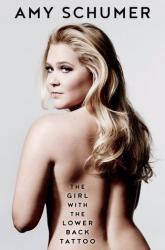
This was a very funny memoir. I enjoyed hearing about her childhood and her personal life because she was both forthright and self-effacing. I did, however, learn a bit too much about her lady parts. Also, the stand-up comedy sections didn't interest me as much. What you see is what you get. If you like Amy Schumer, you will like this book. If not, you won't.
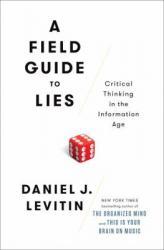
Most adults and teens would greatly benefit from reading this book, especially now that we live in a world where "fake news" is a dire problem. Don't take what you read or hear at face value - really think about it, and decide if what you are reading makes sense. Daniel J. Levitin spells out exactly how (and why) to do that.
For me, some of this was very basic, some of it was review, and some of it was completely new. All of it was useful. It had the added advantage of being easy to read and easy to understand. Almost every segment would start with Levitin presenting a claim and then evaluating the claim for its truthiness. He takes many facets of information dissemination to task - from the various types of information found on the internet to respected news organizations to doctors to scientific journals. It really is something of a field guide as well; I consider myself to be a decent critical thinker, but there were several tips and tricks that I plan to use in the future that I never would've considered had I not read this book. Levitin does a really great job of being non-partisan - he goes out of his way not to come down on one side or another on any issue, he merely evaluates the truth of different assertions (and if he points out the lies on one side of the political aisle, he quickly follows with a lie from the opposing side).
As someone who works at a library, I think information literacy is crucially important. It's even more important today as more and more specious information becomes available through the internet. This book will show you how to sift through the lies and find the truth, an essential skill for everyone. 5 stars.
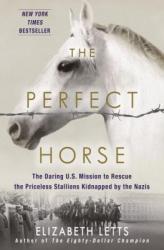
A book for all horse lovers and WWII buffs. Very well written and researched, it reads like a novel. I couldn't put it down as it kept me on the edge of my seat. Elizabeth Letts tells for the first time the full story of the U.S. Army's rescue of priceless treasures - the Lipizzaner of Austria, the Arabians of Poland, as well as stallions from Hungary and Yugoslavia - just as WWII is drawing to a close in a race against time before the Russians arrive. You will cheer and you will cry as you read the plight of horses caught in the middle of a war, pawns of the Nazis who tried to breed the ultimate war horse, their lives forever changed and the heroic men who risked their lives because of their passion and love of horses. Highly recommended!

It did not deliver what it promised; the author diverged from the world of Star Wars and into the world of contemporary politics. He repeatedly brought up points, didn't support them, and never mentioned them again. Did anyone edit this book?

We are looking at ways to eat less meat and have more meatless meals. Eggs are kind of middle ground, since they are an animal product, but in our home, we'd consider an egg meal to be meatless. My other reason? We have a few laying hens, and sometimes I feel like the eggs on hand vastly out-number the ideas I have to use them. My hope with this book was to find some new ideas that would help me use our farm-fresh eggs in different, tasty ways.
The book is beautifully photographed. Each recipe (with the exception of a few technique tips in the first chapter about things like boiling eggs) has a corresponding photo. Even though beautiful photography can be a setup for a 'Pinterest fail', I do appreciate the attention to detail and the gorgeousness of all the final products. The photographs help me decide which recipes might most appeal to my family.
This book does include detailed recipes, but the authors also encourage you to make substitutions and adjustments here and there. This is how I cook all. the. time., so that resonates well with me. If you prefer to follow recipes exactly, you can, but I appreciate the....permission?....to take a recipe and make it my own.
One thing I'm happy to tell you is that this book is not full of breakfast dishes...or strictly egg dishes. Sure, it has both, but it also has recipes that will work throughout the day. Some of the recipes are for breads, soups, and even some spreads - from mayonnaise to an egg butter. I found many recipes that are different from anything I've ever made or eaten, so I am happy with the scope. I like to try foods from various cultures, and this book offers many options in that regard as well.
If you like to cook, if you like eggs in general, and if you're looking for new ideas and inspiration, then I think The Perfect Egg is the perfect place to get a little inspiration!

I have gardened for a very long time. I grew up around gardens, and since I became a (supposed) grownup, I've almost always had one. These days, I find myself in a rather silly situation - five acres of land, but the deer have gotten so comfortable that I can't garden here...well, I can, but the deer eat all the food we grow.
The only success I have these days is in enclosed spaces, but enclosing a space can get expensive. With some materials we had on hand, we have enclosed a small, 15x30 enclosure for gardening.
Enter the book, The Postage Stamp Vegetable Garden, by Karen Newcomb. It is written specifically for those gardening in tight spaces, including containers, flower boxes and small garden plots. I thought this book did a good and thorough job of explaining the process, yet I never felt bogged down by 'too much information'. I liked the information at the beginning of the book that provided some history about different forms of intensive gardening, and I like the way the book is organized through the seasons - preparation of site and soil, adding amendments and planting patterns that help you get the most from a small space, such as companion planting and inter-planting earlier and later crops. Ms. Newcomb even provides specific plant variety recommendations to increase the chances of success, as well as sources for the varieties she recommends.
To me, the overall message of the book is that there are a few different ways to succeed. There are guidelines and suggestions, but no rigidity. If you can't get one soil amendment in your area, there are suggestions of others that will have similar effect. If you want to start your own seedlings, the information is there, but there are also some tips for purchasing ready-to-plant seedlings. There are multiple layout ideas - none of which I would use precisely as shown, but all of which help illustrate the author's suggestions that you plant taller plants to the north (so they don't shade shorter plants), etc.
I like this book, and I appreciate the flexibility it embraces. Having gardened a long time, I have used different methods in different locations with varying results, and I think the author did a good job of presenting small-scale, intensive gardening in a broad and informative way.


